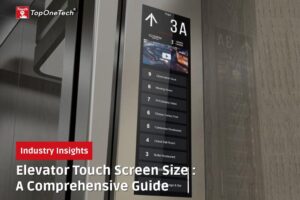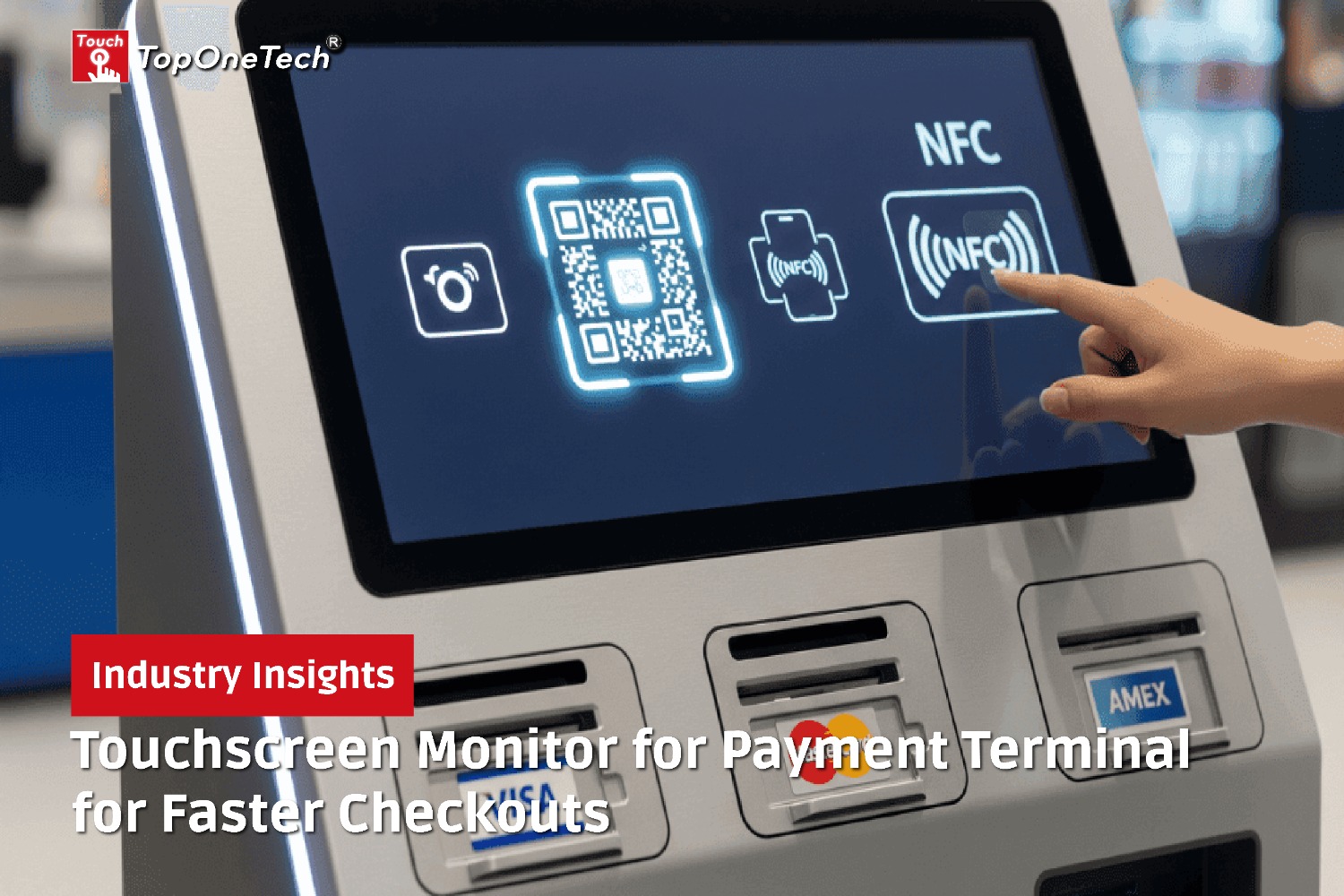
Elevator Touch Screen Size : A Comprehensive Guide – Elevator touch screen have become ubiquitous fixtures in modern vertical transportation systems, offering passengers intuitive interfaces for floor selection, information access, and multimedia content. One key aspect of elevator touch screen is their size, which can vary depending on factors such as elevator cabin dimensions, user interface design, and specific application requirements. In this article, we’ll explore the common sizes of elevator touch screen and their implications for user experience and functionality.
The Common Size of Elevator Touch Screen
1.Elevator Small Touch Screen (Less than 7 inches)
Small-sized touch displays, typically measuring less than 7 inches diagonally, are commonly found in compact elevator cabins or retrofit installations where space is limited. Despite their smaller size, these displays are still capable of providing essential functions such as floor selection, building directories, and emergency assistance. Moreover, their compact form factor makes them suitable for elevators with narrow cabins or minimal wall space available for installation.
2.Elevator Medium Touch Screen (7 to 12 inches)
Medium-sized touch displays, ranging from 7 to 12 inches in diagonal size, are among the most commonly used in elevator applications. These displays strike a balance between visibility and space efficiency, offering sufficient screen real estate for displaying floor layouts, building directories, multimedia content, and emergency instructions. Medium-sized displays are versatile enough to accommodate various user interface elements while fitting comfortably within standard elevator cabin dimensions.
3.Elevator Large Touch Screen (More than 12 inches)
Large-sized touch displays, exceeding 12 inches in diagonal size, are typically reserved for premium or high-traffic elevator installations where enhanced visibility and interactivity are desired. These displays provide ample space for displaying detailed floor maps, multimedia content, advertising, and interactive directories. Large displays make a bold statement in modern elevator designs, enhancing the overall aesthetic appeal and user experience.
4.Custom Sizes and Aspect Ratios
In addition to standard sizes, elevator touch displays are also available in custom sizes and aspect ratios to suit specific design requirements or architectural constraints. Manufacturers may tailor custom-sized displays to fit unconventional cabin layouts, curved walls, or other unique installation scenarios. Moreover, optimizing aspect ratios can efficiently display vertical content, such as building directories or floor layouts, maximizing usability and readability. Top One Tech Can Customize Elevator Touch Screen For Your Needs.
Contact us for further information :
Whatsapp/Call us at : +86 13631610695
Email : sales@toponetech.cn
See Also : Our Wide Range of Touch Screen Products
Factors Influencing Elevator Touch Screen Size Selection
Several factors influence the selection of the size of elevator touch display:
1.Cabin Dimensions
The maximum size of the touch display that can be accommodated is determined by the dimensions of the elevator cabin.
2.Visibility
The display size should ensure passengers inside the elevator cabin have optimal visibility and readability, considering viewing angles and obstructions.
3.User Interface Design
The complexity of the user interface and the information displayed influence the required screen real estate and resolution.
4.Aesthetic Considerations
The size of the display should complement the overall aesthetic of the elevator interior, balancing functionality with design harmony.
Conclusion
Elevator touch display come in a variety of sizes, ranging from small, compact screens to large, immersive displays, each catering to different application requirements and design preferences. By selecting the appropriate size of touch display, elevator manufacturers and building owners can enhance user experience, optimize space utilization, and create visually appealing and functional vertical transportation environments.




